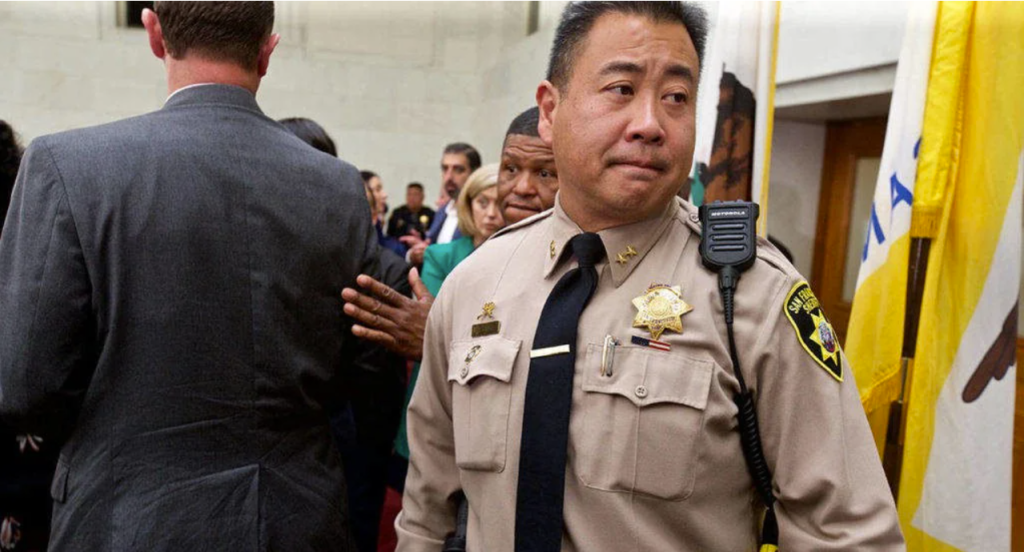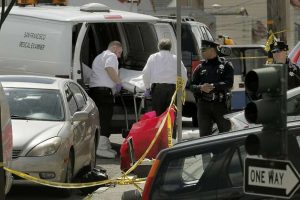The San Francisco Sheriff’s Office (SFSO) is currently facing significant challenges in its hiring process, particularly when compared to the more streamlined and efficient practices of the San Francisco Police Department (SFPD). The inefficiencies within the Sheriff’s hiring process have contributed to prolonged recruitment times and hindered our ability to attract and retain qualified candidates. It is essential to highlight these issues and propose actionable solutions to address them.

Inefficiency in the Written Exam Process
One of the primary areas of inefficiency within the Sheriff’s hiring process is the written exam. The Sheriff requires candidates to take the NTN (National Testing Network) exam, which is not as widely accepted as the PELLET B exam used by the SFPD and many other law enforcement agencies across California. The PELLET B exam offers several advantages:
- Acceptance by Multiple Agencies: PELLET B scores are accepted by numerous law enforcement agencies, allowing candidates to use their existing certified scores from other jurisdictions. This eliminates the need for candidates to take multiple written exams and streamlines the application process.
- Accessibility: There are more testing locations for the PELLET B exam throughout California, making it more convenient and accessible for candidates.
- Efficiency: Offering both the PELLET B and NTN exams would provide candidates with more options and streamline the hiring process, making it more efficient and candidate-friendly.
Despite these clear advantages, the Sheriff has refused to fully adopt the PELLET B exam, opting instead to continue using the NTN exam. This decision has resulted in unnecessary barriers for potential candidates and has contributed to longer recruitment times.
Comparison of Hiring Timelines
The inefficiencies in the Sheriff’s hiring process are further highlighted by comparing the recruitment timelines of the Sheriff and the SFPD. The SFPD has managed to streamline its hiring process, achieving recruitment times of 6 to 8 months. In contrast, the Sheriff’s recruitment timeline ranges from 9 to 18 months, significantly longer than that of the SFPD. This extended timeline is a major deterrent for potential candidates and hampers our ability to fill critical positions promptly.
Use of Technology in the Interview Process
Another area where the Sheriff lags behind the SFPD is in the use of technology for interviews. The SFPD has embraced modern technology by conducting interviews via video conferencing platforms such as Zoom. This approach not only speeds up the hiring process but also makes it more convenient for candidates who may have scheduling or geographical constraints. In contrast, the Sheriff still insists on in-person interviews, which are time-consuming and less flexible. Adopting video conferencing for interviews would be a significant step towards modernizing our hiring process and reducing recruitment times.
Implemented Suggestions
While the Sheriff has accepted our suggestion to waive the online test fees for the NTN exam, this partial measure does not fully address the underlying inefficiencies in the hiring process. Waiving the fees is a positive step, but it falls short of the comprehensive changes needed to make the Sheriff’s hiring process more efficient and competitive.
Authority to Hire Above Entry Step
Another inefficiency in the Sheriff’s hiring process is the refusal to hire above the entry step, despite having the authority to do so. In 2022, Employee Relations Director Ardis Graham confirmed that the Sheriff has the power to hire above Step 1 to attract more entry level applicants. However, this authority has not been utilized, further hindering our entry level recruitment efforts. Hiring at Step 2 would make the Sheriff more competitive and attractive to potential candidates, yet this strategy remains underutilized.
The current inefficiencies in the Sheriff’s hiring process are a significant barrier to attracting and retaining qualified candidates. By adopting the PELLET B exam, offering both test options, utilizing video conferencing for interviews, and exercising the authority to hire above the entry step, the Sheriff can streamline its hiring process and reduce recruitment times. These changes are essential to ensuring that our department is adequately staffed and capable of meeting the demands of our community.
It is time for the Sheriff to take decisive action to address these inefficiencies and implement the necessary changes to improve our hiring process. The SFDSA remains committed to advocating for these improvements and will continue to push for the adoption of more efficient and effective recruitment practices.

 In recent times, the role of peace officers within the Medical Examiner’s Office has come under scrutiny. The issue at hand revolves around the authorization for these peace officers to carry firearms on duty. Our union, recognizing the potential risks and the impact on public safety, initiated a letter correspondence with the Medical Examiner’s Office. This article delves into the critical importance of arming these peace officers and highlights our recent response to address the matter.
In recent times, the role of peace officers within the Medical Examiner’s Office has come under scrutiny. The issue at hand revolves around the authorization for these peace officers to carry firearms on duty. Our union, recognizing the potential risks and the impact on public safety, initiated a letter correspondence with the Medical Examiner’s Office. This article delves into the critical importance of arming these peace officers and highlights our recent response to address the matter. designation within their agency and did not even acknowledge that they have California Peace Officer Standard of Training Certification, emphasizing their civilian-led approach. While we appreciate their perspective, it is crucial to recognize that peace officers play a pivotal role in enforcing laws, protecting the public, and responding to emergencies.
designation within their agency and did not even acknowledge that they have California Peace Officer Standard of Training Certification, emphasizing their civilian-led approach. While we appreciate their perspective, it is crucial to recognize that peace officers play a pivotal role in enforcing laws, protecting the public, and responding to emergencies.